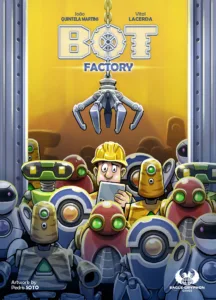 Board gaming has matured over the last five years. The hobby is now at a point where it’s getting spin-offs of popular, heavier titles into more bite-sized, palatable experiences. One of the more popular titles that comes to mind is Gloomhaven: Jaws of the Lion, the small-box, Target-appropriate version of its big brother, Gloomhaven.
Board gaming has matured over the last five years. The hobby is now at a point where it’s getting spin-offs of popular, heavier titles into more bite-sized, palatable experiences. One of the more popular titles that comes to mind is Gloomhaven: Jaws of the Lion, the small-box, Target-appropriate version of its big brother, Gloomhaven.
In 2021, Eagle-Gryphon Games started this trend for themselves when they released Mercado de Lisboa, a board game based off of 2017’s Lisboa that featured about a third of the rules and a reduced level of complexity. This year, they continued this trend with Bot Factory, a smaller version of 2020’s Kanban EV. So what does it bring to the table, and how does it compare to its source material?
Gameplay Overview:
In Bot Factory, 1-4 players will be creating (ro)bots by collecting Project Tiles (blueprints), gathering parts, and assembling the bots together. Each Project Tile allows for the construction of exactly one bot of precisely one color, and each bot needs one head, one chest, and one set of legs to be assembled. Players will be constructing these bots until one of the four color types of bots is completely manufactured, or one player has five bots.
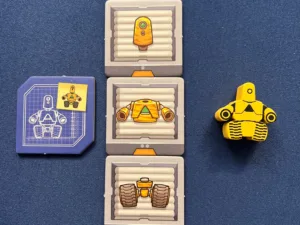
The way that players will be taking actions in the game is through a linear worker placement method that triggers sequentially when everyone has placed. At the start of a new round, from left to right based on where they took their action last turn, players will choose their new action spot. Then, once everyone has settled, the actions will trigger from left to right. To make the action selection even tighter, there’s an Administration Meeple named Sandra who will also be taking up spots and doing upkeep on her “turn”.
Finally, let’s talk about scoring. The fourth action type I’ve not alluded to yet is around victory points themselves. This action area is laid out in two halves: the bots’ inherent values, and contracts. As the game progresses, each bot’s value will be manipulated by other actions in the game, meaning that at end game scoring, each bot could be worth a different number of victory points. For the contracts, these are true contracts: if you do not fulfill them by the end of the game, you will suffer a penalty.
Build the best bots and secure the best contracts to win!
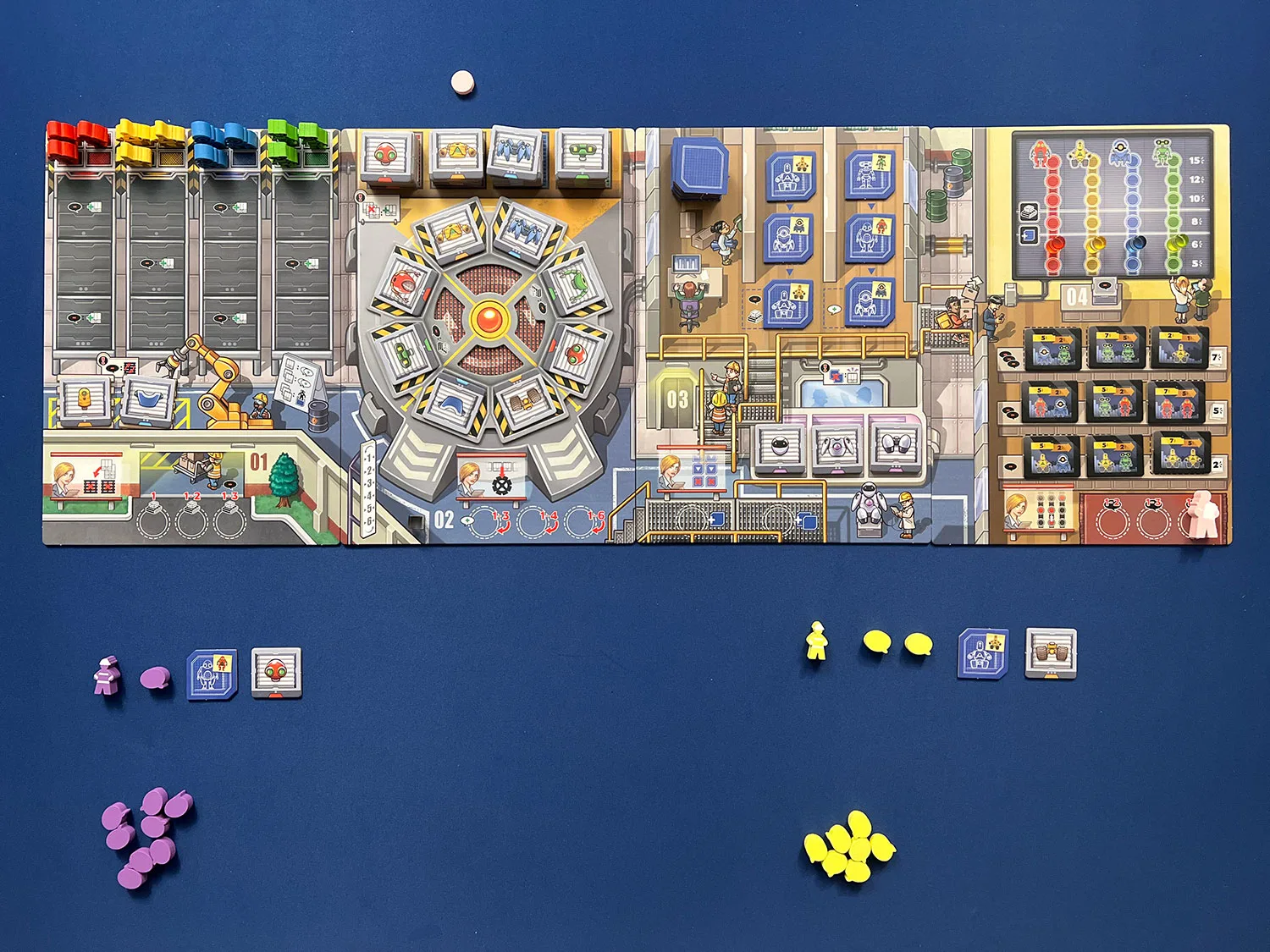
Game Experience:
Before I dive further into the mechanics of the game, I just want to give a shout-out to Eagle-Gryphon for their unbelievable production value. Thick cardboard, screen-printed meeples, a custom organizer for the game, each action selection area is its own board that, when placed next to each other, makes a cohesive image… we’re truly spoiled with just how top-notch this product is. Beyond their physical production, though, the iconography of the game is some of the best I’ve ever come across. I feel like I didn’t even need to read the rulebook. It’s just so good.
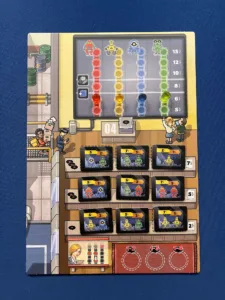
Ok, onto the gameplay. Let’s start positively. The turn order and action resolution is just so spicy. Each action type has a variable number of action spots available for it, but they are not all created equal. The actions on the right-hand side of each area are the strongest, but go after everyone else has acted, whereas the left-hand side actions are weaker but get turn order precedence. Is it more important for you to ensure you get maximum action efficiency, or to get that bot head you really, really need? These are the choices I come back to gaming for. I live for this crunch.
I also adore the entire finance action area. Being able to take punitive contracts in a game always brings me such joy, but especially in a smaller game like this where it’s easier to watch the other players and put that much more effort into stopping them from being able to fulfill it. On top of that, being able to manipulate the bot values is such a juicy action. Do I want to push up the value of what I have, or simply trash the value of my opponents’ strongest bot?
Now onto the less positives. First, I don’t think all of this game’s ideas fit together. As someone that plays heavier titles (and enjoys Kanban EV, the game this is based off), I can internalize the scoring and the turn order shenanigans quite easily. However, I think about the actions and how simple they are to execute and mentally process and am reminded of the simplicity in Lords of Waterdeep: “Go here, get the thing”. There’s just such a lack of cohesion between the simple actions and the heady turn order and victory points.
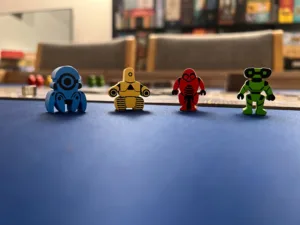
Outside of that, the game also just feels quite flat. I want to manipulate the bots’ victory point values, but if the other players are playing efficiently, then I cannot afford to take that action and cause that to happen. Executive Actions at each action spot are free, but they feel like filler actions to help offset the randomness of the game, not like an action I want to take. The speech tokens as a mini-currency give you a bonus for taking weaker actions and make you pay to take stronger ones, but in the end, it all feels like a wash. This game almost feels overdeveloped and prevents anyone from experiencing turmoil.
Final Thoughts:
Overall, I think Bot Factory kind of succeeds at what it aimed to do: it takes a Vital Lacerda mega-Euro and squishes it into a box the quarter of the size with a quarter of the playtime. And it retains one of the most recognizable features of its big brother in the turn order and action selection mechanism. But in its simplification, it makes the action spaces boring and takes the bite out of the game. Unfortunately, I think the game would have been more successful if it was either simpler, or a bit more complex.
Final Score: 2.5 Stars – Bot Factory steals and mimics from its source material, but doesn’t find its own soul in the process.
 Hits:
Hits:
• Fantastic production
• Thinky action selection resolution mechanic
• Quick turns, quicker playtime
Misses:
• Uneven complexity
• Easy action spaces fall flat
• Scoring not as exciting as its potential
Source: Board Game Quest



